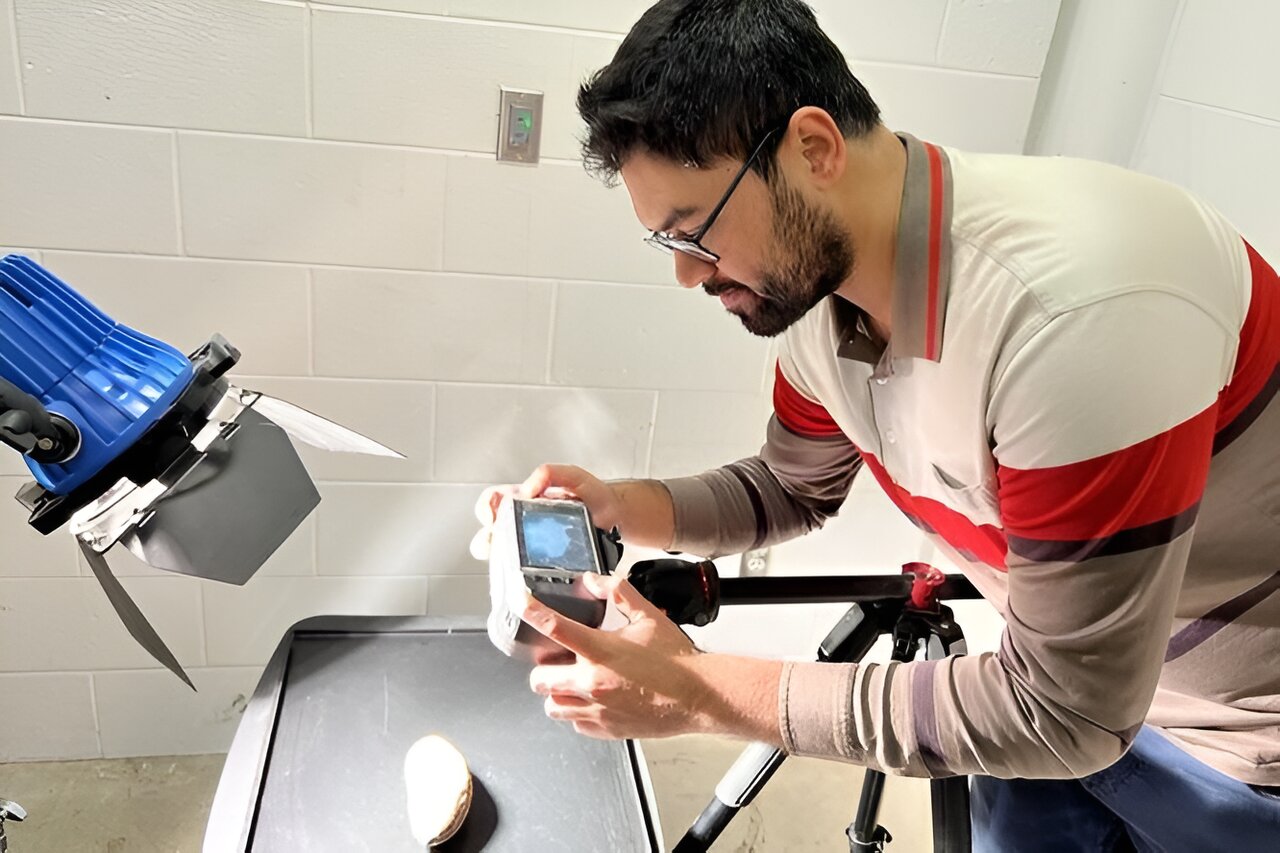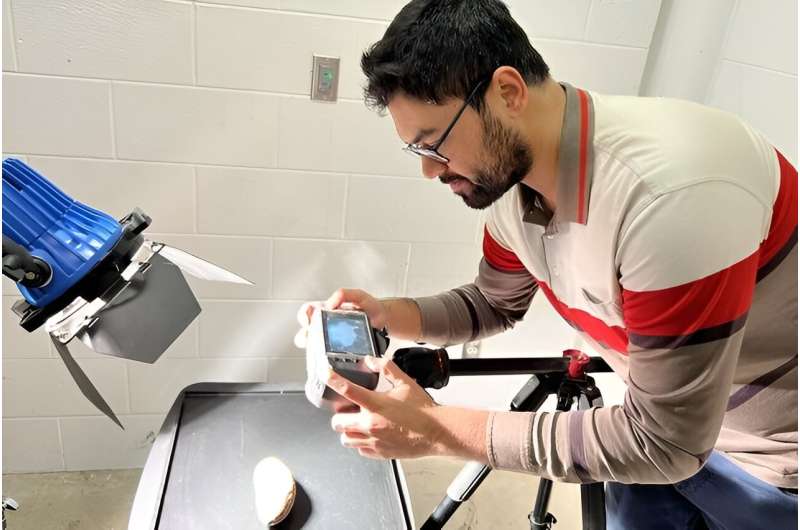

Hyperspectral imaging is a useful technique for analyzing the chemical composition of food and agricultural products. However, it is a costly and complicated procedure, which limits its practical application.
A team of University of Illinois Urbana-Champaign researchers has developed a method to reconstruct hyperspectral images from standard RGB images using deep machine learning. This technique can greatly simplify the analytical process and potentially revolutionize product assessment in the agricultural industry.
“Hyperspectral imaging uses expensive equipment. If we can use RGB images captured with a regular camera or smartphone, we can use a low-cost, handheld device to predict product quality,” said lead author Md Toukir Ahmed.
Ahmed is a doctoral student in the Department of Agricultural and Biological Engineering (ABE), part of the College of Agricultural, Consumer and Environmental Sciences and The Grainger College of Engineering at Illinois.
The researchers tested their method by analyzing the chemical composition of sweet potatoes.
They focused on soluble solid content in one study (published in the Journal of Food Engineering) and dry matter in a second study (published in Results in Engineering)—important features that influence the taste, nutritional value, marketability, and processing suitability of sweet potatoes.
Using deep learning models, they converted the information from RGB images into hyperspectral images.
“With RGB images, you can only detect visible attributes like color, shape, size, and external defects; you can’t detect any chemical parameters. In RGB images you have wavelengths from 400 to 700 nanometers, and three channels—red, green, and blue.
“But with hyperspectral images you have many channels and wavelengths from 700 to 1,000 nm. With deep learning methods, we can map and reconstruct that range so we now can detect the chemical attributes from RGB images,” said Mohammed Kamruzzaman, assistant professor in ABE and corresponding author on both papers.
Hyperspectral imaging captures a detailed spectral signature at spatial locations across hundreds of narrow bands, combining to form hypercubes. Applying cutting-edge deep learning-based algorithms, Kamruzzaman and Ahmed were able to create a model to reconstruct the hypercubes from RGB images to provide the relevant information for product analysis.
They calibrated the spectral model with reconstructed hyperspectral images of sweet potatoes, achieving over 70% accuracy in predicting soluble solid content and 88% accuracy in dry matter content, marking a significant improvement over previous studies.
In a third paper, published in Smart Agricultural Technology, the research team applied deep learning methods to reconstruct hyperspectral images for predicting chick embryo mortality, which has applications for the egg and hatchery industry. They explored different techniques and made recommendations for the most accurate approach.
“Our results show great promise for revolutionizing agricultural product quality assessment. By reconstructing detailed chemical information from simple RGB images, we’re opening new possibilities for affordable, accessible analysis.
“While challenges remain in scaling this technology for industrial use, the potential to transform quality control across the agricultural sector makes this a truly exciting endeavor,” Kamruzzaman concluded.
More information:
Md Toukir Ahmed et al, Deep learning-based hyperspectral image reconstruction for quality assessment of agro-product, Journal of Food Engineering (2024). DOI: 10.1016/j.jfoodeng.2024.112223
Md Toukir Ahmed et al, Comparative analysis of hyperspectral Image reconstruction using deep learning for agricultural and biological applications, Results in Engineering (2024). DOI: 10.1016/j.rineng.2024.102623
Md Toukir Ahmed et al, Hyperspectral image reconstruction for predicting chick embryo mortality towards advancing egg and hatchery industry, Smart Agricultural Technology (2024). DOI: 10.1016/j.atech.2024.100533
Provided by
College of Agricultural, Consumer and Environmental Sciences at the University of Illinois Urbana-Champaign
Citation:
New imaging technique paves the way for simplified, low-cost agricultural quality assessment (2024, September 30)
retrieved 30 September 2024
from https://phys.org/news/2024-09-imaging-technique-paves-agricultural-quality.html
This document is subject to copyright. Apart from any fair dealing for the purpose of private study or research, no
part may be reproduced without the written permission. The content is provided for information purposes only.